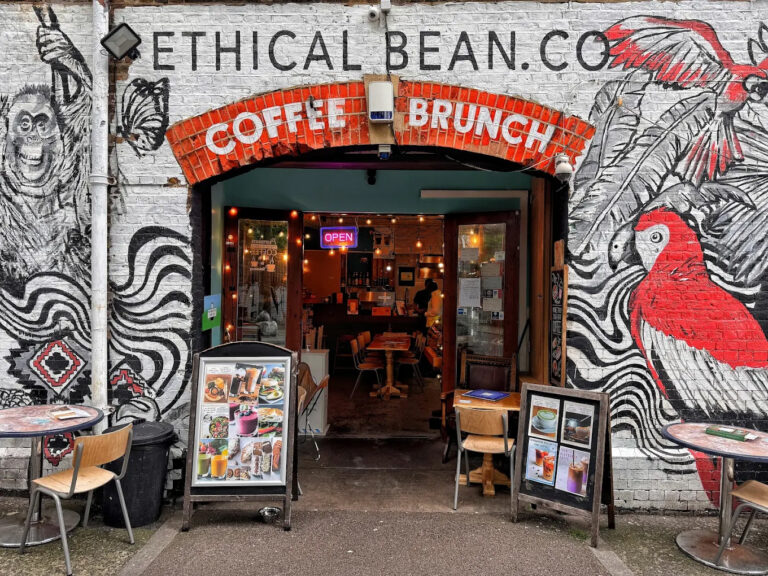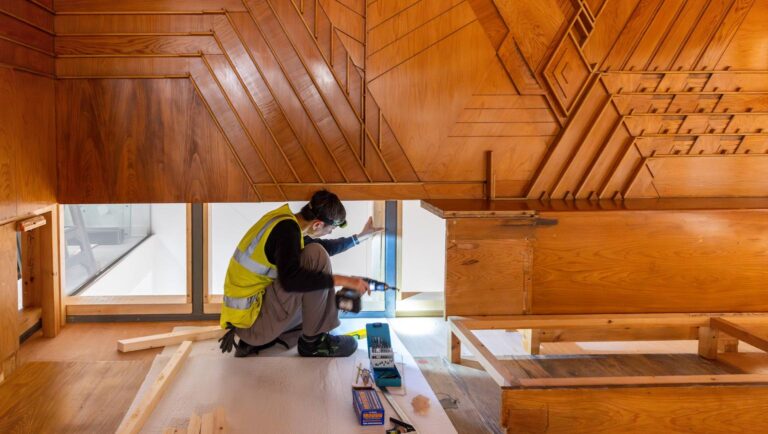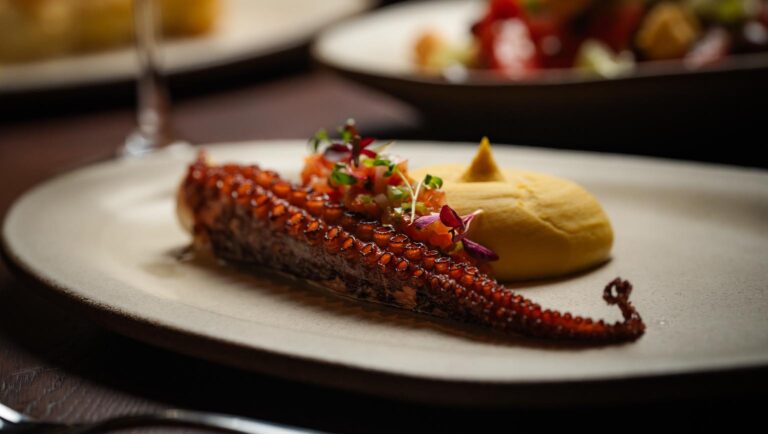
The Best Eating & Drinking on Fish Island
Your timely reminder to go visit these amazing restaurants, bars and cafes this summer while we wait for better bridge access…
At the recent two-day ‘State of the Legacy’ conference hosted by UCL Urban Laboratory at Here East, delegates were asked to share their perspectives on the legacy of the London 2012 Olympics Games. ‘Ain’t no legacy’, one response read.
Straight to the point, it’s a view that resonates with community groups and residents alike, including those conference delegates and the people behind the Focus E15 campaign who have been working to secure affordable, safe, and secure housing for Newham residents over the past decade. It’s also familiar to Joy White, a sociologist whose recent book Terraformed charts the struggles of Black young people growing up amid the unequal ‘regeneration’ of a fast-changing neighbourhood in one of London’s five Olympic boroughs.
Just a short walk from the conference venue across the Hackney Cut – an artificial channel built in the 1700s to improve navigation along the River Lea – an unsuspecting two-storey, pitched-roof building on Wallis Road, tucked away between Bar 90 and Rahims, further evidences this refrain.
Looking out of place amongst the ‘biscuit tin’ vernacular rising up around Main Yard, the spray paint-daubed Gilbert Johnstone Boathouse belongs to the Eton Mission Rowing Club (EMRC). Opened in 1934, it is part of a long history of philanthropy and humanitarianism in the East End of London that stretches back to the 1800s. The club, originally founded in 1885, was part of the Eton Mission, a paternalistic organisation associated with the public school of the same name. According to urbanist Juliet Davis, although the mission offered a range of services to working class boys, the club was part of a broader project to control the physicality and morality of East London’s poor communities, and to steer them away from vices such as drinking and gambling.

Rowing continued from the club until 2012 when the activity was, ironically, banned along the park’s waterways for the duration of the Games.
Since then, rowing activities have been hampered by the development of the H10 pedestrian bridge connecting Hackney Wick and East Wick (part of a £10million project to improve walkability into and out of Hackney Wick Station that involved a section of the club’s land being compulsorily purchased and restricting access to the water from the boathouse) and an increase in recent years of liveaboard vessels that have rendered canal channels too narrow for safe rowing.
Club committee member Robert Hall hasn’t rowed from the club since his last outing in 2018 during which he had three collisions “not serious [enough] to cause damage or injury, but enough to then consider the canal as unsafe for rowing,” he explains.
While some gym-based training activities do take place at the club, its twenty-five or so unused boats – called ‘sculls’ – lie in storage, gathering dust. Bar the chirping of the effervescent sparrows for whom the boathouse eves provide a home, a lack of activity at the site means many assume the boathouse is abandoned. Break-ins have been attempted, Hall notes, who sometimes encounters “the leftovers’ of a late-night party” as he arrives at the boathouse in the early mornings. “Any interaction or conversation is no doubt soon forgotten due to their alcohol or other substance intoxication”, Hall muses.
With its long history of providing sport and recreational activities to local communities and a site that borders the Queen Elizabeth Olympic Park (QEOP) (not to mention the twenty-five rowing boats gathering dust during a cost of living crisis when sport and recreation are likely to be some of the things families cut spending on as they look to save), ten years on from London 2012, one might be forgiven for expecting that the club would have benefitted in some way from the sporting mega-event that took place right next door.
Such a notion, after all, chimes with the Department for Culture, Media and Sport’s promise that the Olympics would “rejuvenate East London’s waterways” by providing opportunities for recreation and transport, and inspire a “new generation of young people” to engage in more physical activities. As Hall recounts however, despite engaging with the various planning and development bodies overseeing the Games to find an alternative venue for them, the club was perceived as a “problem” rather than an asset.

Over on the other side of the QEOP, at a purpose-built watercraft pontoon on another artificially channelled waterway – East London’s Waterworks River – banked by the London Aquatics Centre on one side and the Olympic Stadium on the other, a very different story emerges. A permanent outpost of London Youth Rowing (LYR) – a rowing and paddle sports charity founded in 2005 and active in the QEOP since 2013 – the twelve-month old pontoon is the result of decade-long support for LYR from the London Legacy Development Corporation.
Catching up with Owen Shephard Wyatt, the on-water manager for LYR in the QEOP, he tells me that LYR’s first project, located in the North section of the park underneath Knights Bridge and adjacent to the Velo Park, was hugely successful. So much so, that a new site was sought to develop a “much wider water sports offer that would include multi-generational, multi-offer options” for young people and adults to “engage the local community in rowing, canoeing, kayaking and Stand Up Paddleboarding”.
Part of LYR’s ‘Active Row’ programme that serves two thousand young people per year in London alone – including children with special educational needs – LYR’s site in the QEOP is the subject of a broader collaboration with British Canoeing and Sports England that will see the provision of recognised paddle sport qualifications, and “deliver life skills and opportunities to a wide range of young people, who might not have had these opportunities otherwise,” Shephard-Wyatt notes.
Back in Hackney Wick, although clearly frustrated by the situation at EMRC, like Shephard-Wyatt, Robert Hall remains optimistic about his club’s future. Prepared to forget its recent troubles, he hopes an ongoing project to resurrect the club’s legacy at nearby Royal Docks might come to fruition soon.
Though a collaboration between LYR and EMRC looks unlikely, there is certainly no animosity between the two organisations: Shephard-Wyatt indicates that LYR would be very happy “to signpost new members to Eton Mission in the future if they wanted that”. While LYR’s work is certainly to be commended, reading the post-Olympics decline of EMRC – one of Hackney Wick and Fish Island’s historically significant institutions – in the context of LYR’s success nonetheless raises difficult questions about which local institutions have and have not benefitted from the legacies of the London 2012 Olympic games ten years on.

Your timely reminder to go visit these amazing restaurants, bars and cafes this summer while we wait for better bridge access…

The twist and turns of post-Olympics decision-making that brought 250,000 objects to Here East

This thoroughly modern restaurant may be far from the taverna, but it’s filled with Mediterranean flavours, and much more
A joint venture in collaborative local media from:


In partnership with

Regulated by IMRESSS, the Independent Monitor for the Press CIC.
For more info on our complaints policy, or to make a complaint, visit FAQ.
